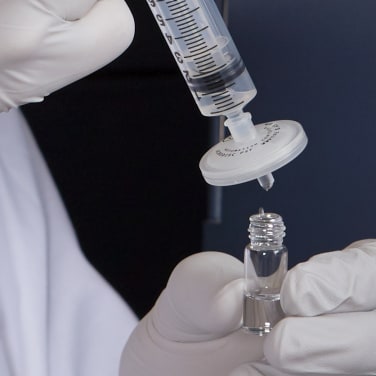Why Sample and Mobile Phase Filtration is Essential for HPLC Analysis
To Filter or Not to Filter?
Serious problems in high performance liquid chromatography (HPLC) analysis can be avoided by being alert to preliminary warning signs and performing routine maintenance. Most HPLC part-replacement tasks such as changing pump seals are readily recognised as necessary maintenance; however, mobile phase and sample filtration are also highly important maintenance practices.
Sample and mobile phase filtration are simple economical practices that extend the life of consumable parts on an HPLC system, decrease system wear and tear, and preserve the integrity of the system. By reviewing the consequences of improper filtration practices, analysts can become familiar with the early warning signs of filtration-related problems and avoid the expense and downtime related to lengthy maintenance repairs and replacement costs.
What Type of Filter To Look For
Injecting clean samples prolongs injector and column life. Samples are cleared of particulate and bacteria with disposable syringe filters. Disposable filters range in size (4-25mm) and pore size (0.2-1.0μm). Syringe filters are membranes enclosed in plastic housings that attach to a syringe with a luer fitting. Samples are filtered by drawing fluid into the syringe, attaching the filter, and dispensing the sample through the filter into a vial. To reduce physical and chemical variability among manufacturers, sample and mobile phase filtration products should be purchased from the same manufacturer.
A 0.45μm pore size filter is typically selected for HPLC applications, while for bacterial removal or UHPLC applications a 0.2μm filter is chosen. For particulate-laden samples, Pall incorporates large pore size prefilters in one device with smaller pore size membranes. Low protein binding and sterile filters are also available. HPLC injectors are available in several styles including a septum, septumless stop-flow device, and a manual or automated valve system. A valve injector is most typical. An injector should ensure reproducible sample introduction.
Sample and solvent filtration prevents low-volume injector fittings from blocking, scratching and leakage. Loop or waste line blockage results in high back pressure and loop filling difficulty. Low dead volume fittings, located between the valve injector and column to decrease band broadening, also are subject to blockage. Other contributors to HPLC problems include mismatched or damaged injector components, variable sample volumes, leaks and increased system pressure. With filtration, properly adjusted and clean injectors should last 5,000 injections.
Choosing the proper filter requires knowledge of filter/solvent compatibility and the chemical/physical characteristics of the filter. These characteristics include pore size, pore distribution, filter thickness, extractables, hydrophobic/hydrophilic character, binding properties, pyrogenicity, gas and liquid flow rate, burst strength, autoclavability, pore size and nominal particulate retention. Choosing the incorrect filter could cause extractable materials to jeopardize analytical results. For chromatographic analysis, scenarios resulting from extractable materials include sample absorption, coelution and extraneous peaks.
How To Choose the Right Filter
- Is your filter application automated or manual?
- What is the filter’s chemical compatibility?
- What is the effective filtration area (EFA) needed for your filtration?
- What pore size should be used for an effective filtration?
Summary
Sample and mobile phase filtration are simple economical practices that can extend the life of consumable HPLC parts. With a basic understanding of how proper filtration benefits various components of an HPLC system, and by selecting the proper filter, laboratories can avoid the time and expense of unexpected part repair and replacement.
Content provided by:





